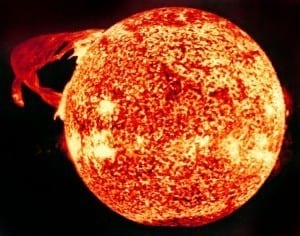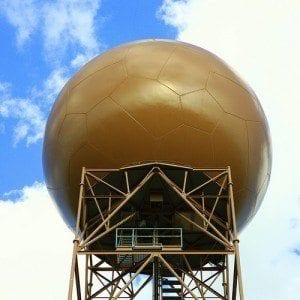
First in 5 years
A storm moving at 4.5 million miles per hour, spawning the largest solar flare in 5 years, is set to arrive this Thursday.
“It’s hitting us right in the nose,” said Joe Kunches, a scientist for the National Oceanic and Atmospheric Administration in Boulder.
This solar storm is part of an 11-year cycle by the sun. This season’s solar weather, consentient with the rest of earths storms, is set to have a harsh season. Solar storms have been rather weak recently and Bill Murtagh, program coordinator of the federal government’s Space Weather Prediction Center agrees, “This is a good-size event, but not the extreme type.”
This solar flare is just apart of the sun’s normal 11-year cycle and although will bring no harm to people it can disrupt technology. There are three phases to expect with a solar flare.
The first came last Tuesday when two flares moving at nearly the speed of light struck earth. These flares are known to cause radio disruptions.
The second phase is when solar radiation struck Earth’s magnetic field, lasting for days. This radiation could impact air traffic in particular.
And, the final phase is a plasma cloud sent by the coronal mass ejection. This in laymen’s terms is a part of the suns atmosphere that is set to hit earth early Thursday. This phase is capable of disrupting oil pipelines, satellites, power grids, GPS systems and some agricultural operations.
Don’t worry about low tech GPS- your Range Rover will still have turn by turn navigation, it is the high tech systems that could be affected.
The positive to the storms is the auroras or Northern Lights that will be seen late Thursday evening. Auroras are “probably the treat we get when the sun erupts,” Kunches said. A full moon will make them hard to see this time but with the solar flare, the sights could be seen on the northern part of the United States.















